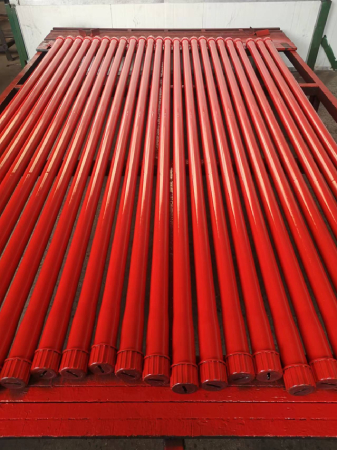- Afrikaans
- Albanian
- Amharic
- Arabic
- Armenian
- Azerbaijani
- Basque
- Belarusian
- Bengali
- Bosnian
- Bulgarian
- Catalan
- Cebuano
- Corsican
- Croatian
- Czech
- Danish
- Dutch
- English
- Esperanto
- Estonian
- Finnish
- French
- Frisian
- Galician
- Georgian
- German
- Greek
- Gujarati
- Haitian Creole
- hausa
- hawaiian
- Hebrew
- Hindi
- Miao
- Hungarian
- Icelandic
- igbo
- Indonesian
- irish
- Italian
- Japanese
- Javanese
- Kannada
- kazakh
- Khmer
- Rwandese
- Korean
- Kurdish
- Kyrgyz
- Lao
- Latin
- Latvian
- Lithuanian
- Luxembourgish
- Macedonian
- Malgashi
- Malay
- Malayalam
- Maltese
- Maori
- Marathi
- Mongolian
- Myanmar
- Nepali
- Norwegian
- Norwegian
- Occitan
- Pashto
- Persian
- Polish
- Portuguese
- Punjabi
- Romanian
- Russian
- Samoan
- Scottish Gaelic
- Serbian
- Sesotho
- Shona
- Sindhi
- Sinhala
- Slovak
- Slovenian
- Somali
- Spanish
- Sundanese
- Swahili
- Swedish
- Tagalog
- Tajik
- Tamil
- Tatar
- Telugu
- Thai
- Turkish
- Turkmen
- Ukrainian
- Urdu
- Uighur
- Uzbek
- Vietnamese
- Welsh
- Bantu
- Yiddish
- Yoruba
- Zulu
pump seating nipple
The Importance of Pump Seating Nipples in Oil and Gas Production
In the oil and gas industry, efficiency and reliability are of paramount importance. One key component that plays a crucial role in the operation of submersible pump systems is the pump seating nipple. This seemingly small part can significantly influence the overall performance and durability of oil extraction processes. In this article, we will explore what pump seating nipples are, their functions, and their significance in enhancing the efficiency of oil production systems.
Understanding Pump Seating Nipples
A pump seating nipple is a specialized component designed to provide a stable foundation for submersible pumps used in oil wells. Typically made from high-strength materials such as steel or corrosion-resistant alloys, these nipples are designed to withstand the harsh conditions often found in subsurface environments. The seating nipple acts as the connection point between the pump and the production tubing, effectively “seating” the pump in place. This ensures that the pump can function optimally without dislodging or misalignment during operation.
Functions of Pump Seating Nipples
The primary function of a pump seating nipple is to secure the submersible pump in position, allowing it to maintain an adequate pumping depth and ensuring efficient fluid flow. This is critical because improper seating can lead to many problems, including decreased efficiency in fluid extraction, increased wear and tear on the equipment, and, in severe cases, pump failure.
In addition to securing the pump, seating nipples also provide a means for fluid to enter the pump's suction intake. They are designed with specific geometries that optimize the flow of fluids, allowing for effective movement of oil or gas toward the surface. Moreover, many pump seating nipples are equipped with features that enable easier retrieval and maintenance of the pump, minimizing downtime and operational costs.
pump seating nipple

Significance in Oil Production
The role of pump seating nipples extends beyond mere support; they are vital to the overall efficiency and success of oil and gas production. A well-functioning pump seating nipple ensures that the pump operates within its designed parameters, leading to increased output and reduced operational costs. By maintaining optimal pump performance, operators can maximize their return on investment and improve the sustainability of their production processes.
Furthermore, the material and design of pump seating nipples can significantly influence their durability and resistance to corrosion and wear. In many oil fields, the presence of aggressive fluids and gases can lead to accelerated degradation of equipment. High-quality seating nipples help mitigate these risks, prolonging the lifespan of the entire submersible pump system.
Innovations and Future Directions
As technology advances, so do the designs of pump seating nipples. Innovations such as improved material compositions and enhanced geometries are continuously being developed to further increase efficiency and durability. Additionally, some companies are exploring the use of composite materials that can withstand harsh operating conditions while minimizing weight, making installation and retrieval more manageable.
In conclusion, pump seating nipples are essential components in the oil and gas industry, serving functions that are critical to the proper operation of submersible pumps. Their significance lies not only in their role as a physical anchor for the pump but also in their influence on efficient fluid flow and equipment longevity. As the industry continues to evolve, ongoing innovations in the design and manufacturing of seating nipples will likely enhance the performance of oil production systems, driving efficiency and sustainability. The importance of investing in high-quality seating nipples cannot be overstated, as they are integral to the successful extraction of valuable natural resources.
-
Tubing Pup Joints: Essential Components for Oil and Gas OperationsNewsJul.10,2025
-
Pup Joints: Essential Components for Reliable Drilling OperationsNewsJul.10,2025
-
Pipe Couplings: Connecting Your World EfficientlyNewsJul.10,2025
-
Mastering Oilfield Operations with Quality Tubing and CasingNewsJul.10,2025
-
High-Quality Casing Couplings for Every NeedNewsJul.10,2025
-
Boost Your Drilling Efficiency with Premium Crossover Tools & Seating NipplesNewsJul.10,2025







